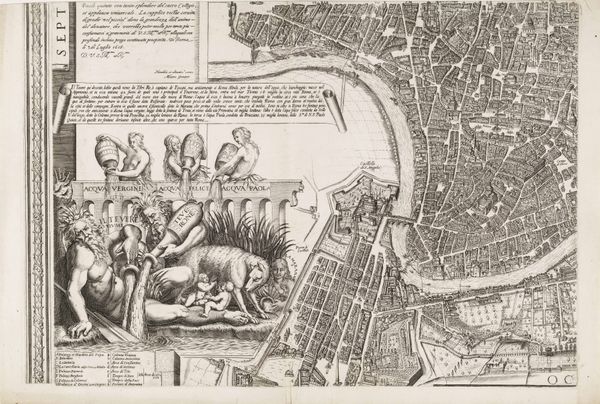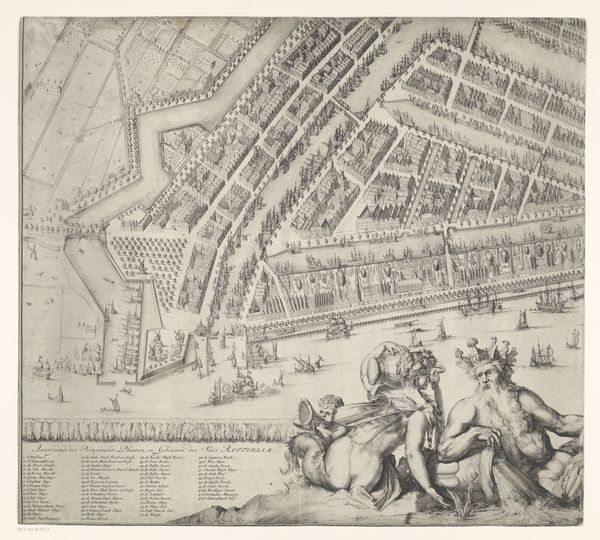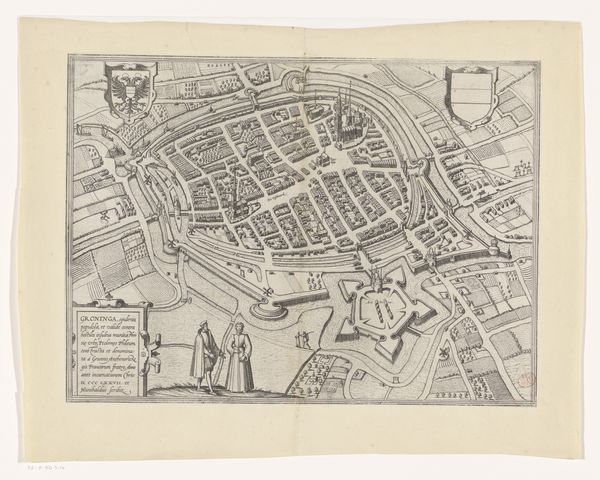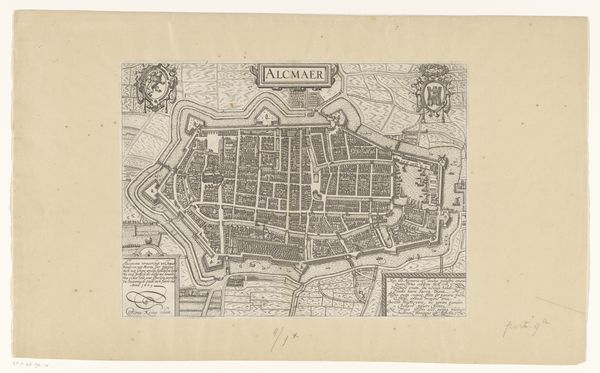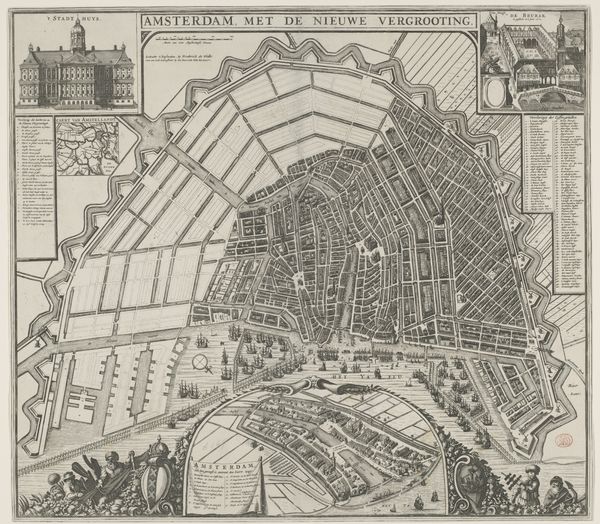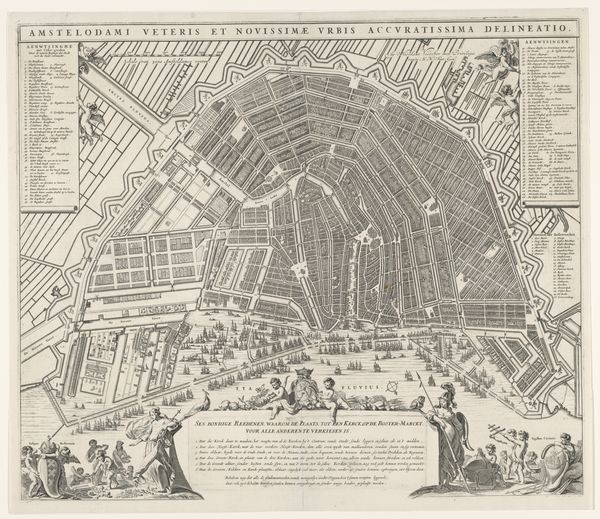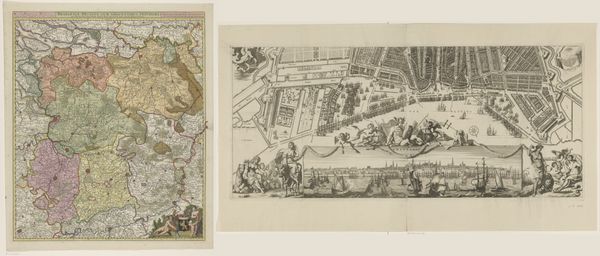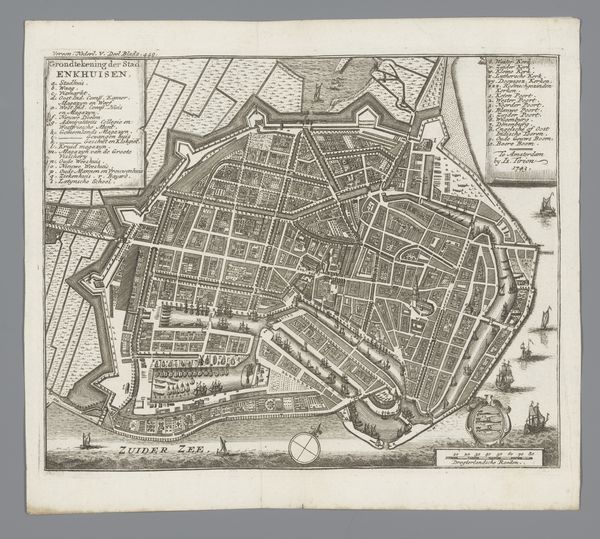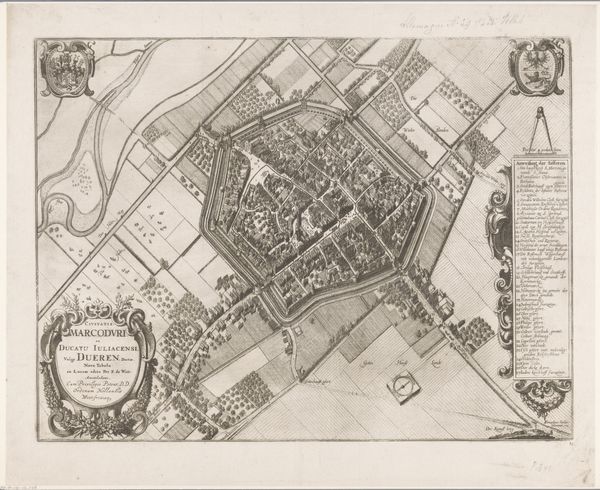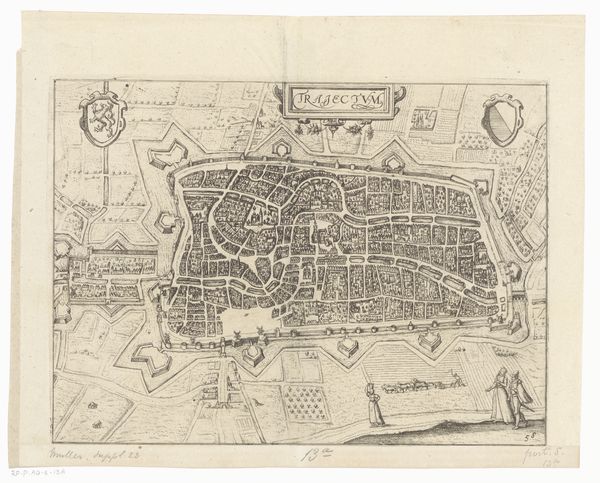
print, engraving
#
baroque
# print
#
cityscape
#
engraving
Dimensions: 1850 mm (height) x 1300 mm (width) (monteringsmaal), 475 mm (height) x 704 mm (width) (bladmaal)
Curator: This is Matthäus Greuter’s “Map of Rome. Upper left part,” an engraving dating back to 1634. What strikes you about it initially? Editor: The density is incredible! It’s like a spiderweb made of buildings, all rendered with such intricate detail. There’s something imposing about its meticulousness. It definitely communicates power through organization, doesn't it? Curator: Indeed. City maps in this era were far more than geographical tools; they served as potent statements of authority and urban planning. Notice the allegorical figures flanking the top left corner – representations of justice and perhaps civic virtue? It certainly seems intended as a proclamation. Editor: Exactly! And that coat of arms positioned above them…whose is it? It adds another layer, hinting at the patronage or ruling power connected to Rome during that time. It’s not just a map, but a heavily encoded representation of political and social order. I can only imagine the resources required to put something like this together, and that labor is surely something to consider. Curator: Absolutely. And we see those socio-political considerations reflected directly within the structure of the map itself. Observe how the artist has chosen to represent the spaces occupied by various religious orders, landowners, and other wealthy and influential Roman families and individuals of that era. Editor: The level of detail emphasizes their importance within the societal fabric, almost acting as an advertisement. It definitely invites me to consider who benefited most from this representation. Was it for Rome's citizens or Rome’s power brokers, both secular and religious? Curator: Likely, it served both purposes. Maps like this were powerful visual propaganda, intended to inspire a sense of awe and stability. It showcases the glory of Rome, but from a specific perspective that reaffirms existing social and political hierarchies. Editor: Right. It really makes you question the power dynamics inherent in even the seemingly objective representation of a space. I appreciate seeing how something that appears purely informational can also serve to solidify a certain status quo. Curator: That's what makes historical artifacts like these so compelling, isn't it? It's in these seemingly straightforward images that we find the most telling cultural and social artifacts. Editor: Agreed. Seeing Rome laid out like this invites consideration for those written out of it as well.
Comments
No comments
Be the first to comment and join the conversation on the ultimate creative platform.
